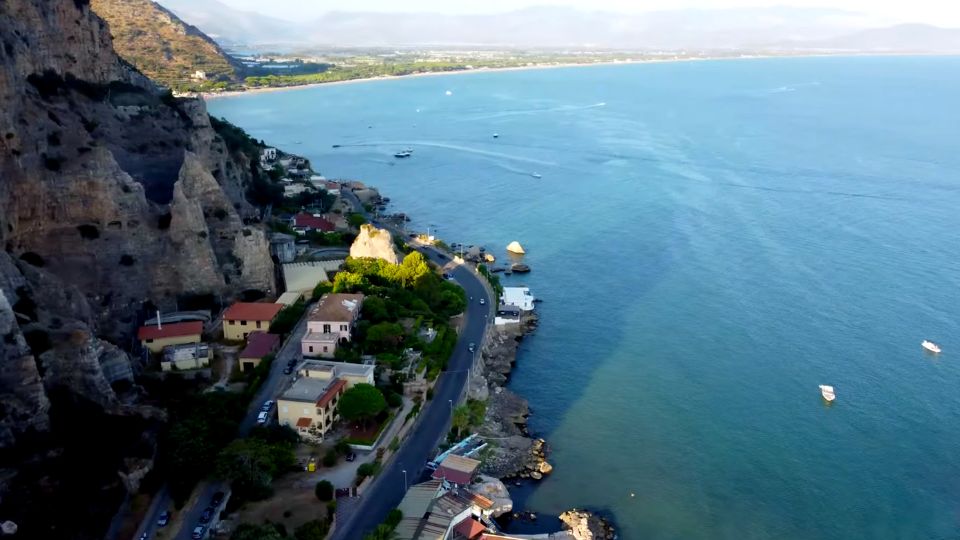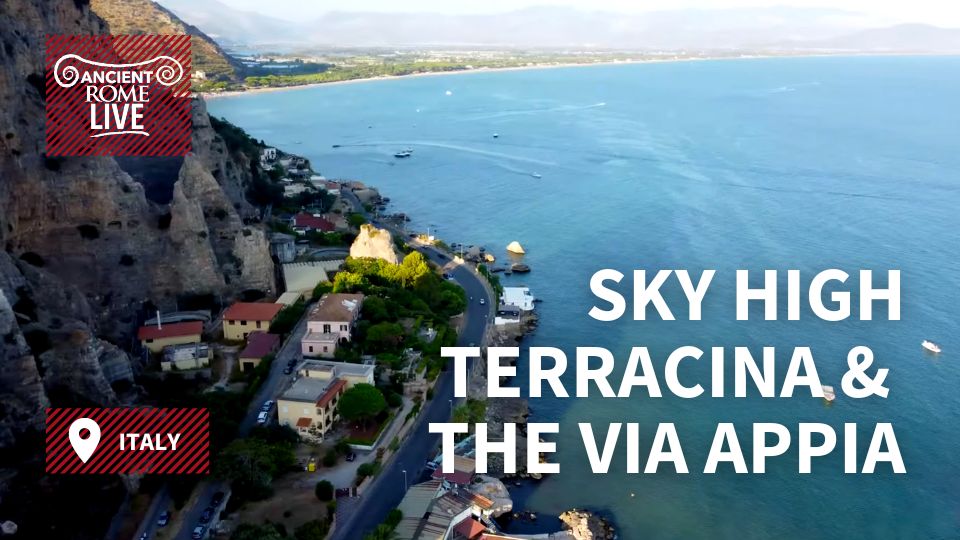Start with our video overview:
The next stretch of Via Appia from the Castelli Romani to Terracina is an often-underappreciated portion along which several significant monuments and countless more traces remain of Roman history during the last two millennia. As the ancient road leaves the city of Rome behind and continues through Lazio, it ascends for the first time to follow the border of an extinct volcanic crater, another remnant of the prehistoric landscape of the region, beside the basalt paving the road itself. To support the increased elevation of the road, a large wall was constructed, which still supports cars driving across it today. Along this segment, much of the road is still in use, albeit beneath layers of modern asphalt, attesting to the solidity of ancient Roman engineering.
The first resting points along Via Appia were found in ancient Ariccia. The modern town of Ariccia is southeast of Rome, nestled in the Alban Hills, built atop the ancient village. Via Appia, typical for Roman roads, was originally 12-feet wide: wide enough for two carriages to pass one another with additional space for pedestrians to walk. Travelers may have been commuting by foot, horse, or carriage when they reached Ariccia, and there are archeological traces of shelters and food that would have been available for both people and their animals. Though Ariccia is not unique: as the road was over 300 miles long and in use for several centuries, there is ample evidence of resting places at many points along the route. This type of archeological evidence can inform us about the types and motives of travelers during different periods in history.
On the cusp of the Pontine Marshes (malaria-infested and drained for the construction of Via Appia) lies a site known during antiquity as Tres Tabernae for the three stores situated between Rome, Tusculum, and Alba Longa. It included a general store, a blacksmith workshop, and a refreshment house, indicating the needs of travelers at this point in their journey, 30 miles from Rome. Both Paul the Apostle and Horace wrote of these services.
Further traces of historical figures have been found across the landscape, including the Tor Tre Ponti bridge, a 40 meter-long Trajan-era construction integrated into the road. The original inscriptions are intact, although largely obstructed from view due to vegetation overgrowth. The tomb of Clesippus Geganius dating from the 1st century BCE provides a window into an understudied facet of the Roman world. Clesippus was an enslaved man noted for his hunchback by Pliny the Elder, who narrates the circumstances under which a female aristocrat, Gegania, bought a chandelier from a former slaver and received Clesippus as part of the transaction. As was common at the time, Clesippus was forced to entertain guests in humiliating conditions; however, as was also commonly rumored, Gegania fell in love with him, freed him, and left him an inheritance with which he constructed this enduring tomb. Although ordinary at first appearance, the tomb is a rare tangible trace of the life of a disabled and enslaved person in ancient Rome.
References
- Berechman, “Transportation – economic aspects of Roman highway development: the case of Via Appia”, (Tel Aviv 2002).
- Brignell, “Smeared with mustard, stripped naked: the curious and often cruel treatment of disabled people in Ancient Rome” (London 2008).
- Claridge, “Rome: An Oxford Archaeological Guide”, (Oxford 2010).
- Porfyriou and B. Yu, “China and Italy: Routes of Culture, Valorisation and Management”, (Rome 2018).
This content is brought to you by The American Institute for Roman Culture, a 501(C)3 US Non-Profit Organization.
Please support our mission to aid learning and understanding of ancient Rome through free-to-access content by donating today.
Cite This Page
Cite this page as: Darius Arya, The American Institute for Roman Culture, “Via Appia: Episode III, Sky High Terracina” Ancient Rome Live. Last modified 12/09/2022. https://ancientromelive.org/via-appia-episode-iii-sky-high-terracina/
License
Created by The American Institute of Roman Culture, published on 12/09/2022 under the following license: Creative Commons: Attribution-NonCommercial-ShareAlike. This license lets others remix, tweak, and build upon this content non-commercially, as long as they credit the author and license their new creations under the identical terms. Please note that content linked from this page may have different licensing terms.



